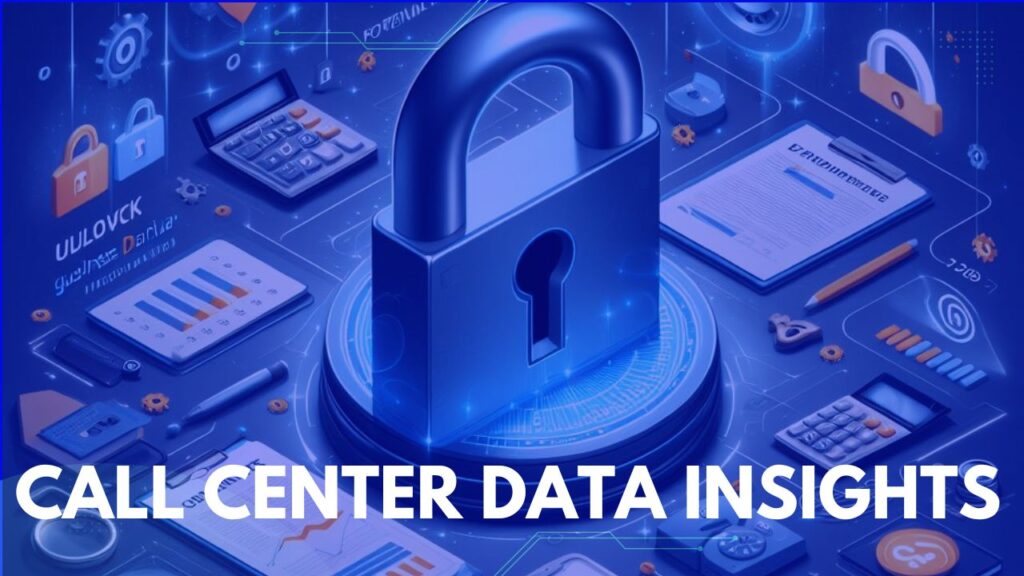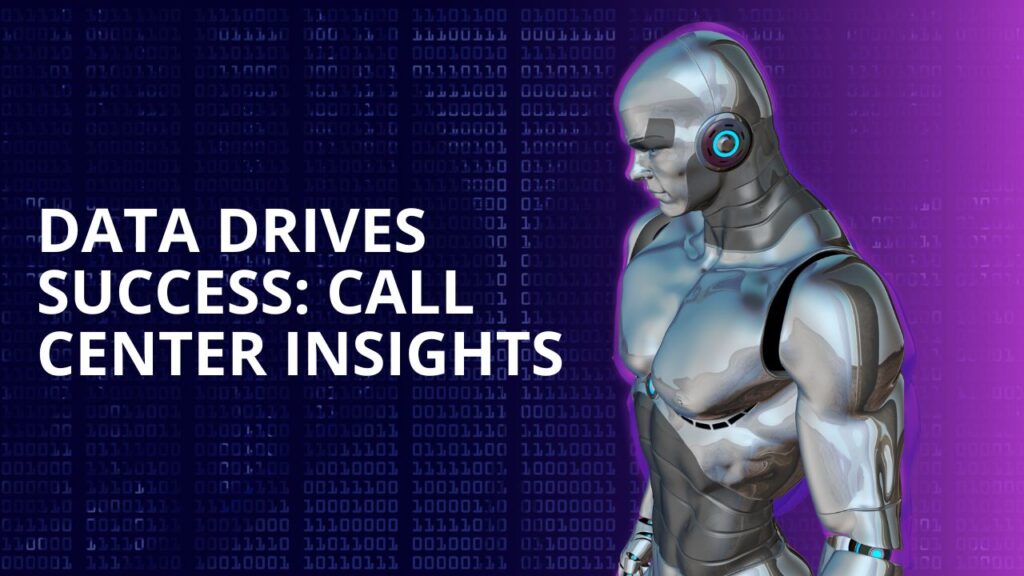In a dynamic environment of call centers, data is not just a buzzword, but the pulsating bloodstream of achievement. Every time we delve into a new stage of history, we gain experiences and knowledge, enhance our abilities, and learn more about ourselves and our place in the universe. From refining processes to developing customer relationships, cleanly obtained information is the beacon directing call centers to success. Drives Success with Call Center Data Insights. In this article, we investigate the data`s prominent role and see how it affects face-to-face communication. Outlining Efficiency to be the first topic where the functioning of a call centre will be explored and then Customer Satisfaction will follow thereafter.
Table of Contents
I. Introduction
A. The Power of Data Use by Call Centres
In an epoch of customers that are super picky, Call Center Data Insights are a key player that will help an organization keep the reputation and brand approval to its potential level. Every (interaction) matters and data will help call center make the call center process more accurate . Be it attendance of calls, looking into the areas of agent’s performance or even finding common points that require alteration, data acts as that magic ingredient that makes the friend from foe process.
B. Data Analysis – Efficiency’s Navigation
Wasting resources is no longer an option. This is the important efficiency. The help lines cater to an unending flow of the look-up, registration and service tweaking job. The data analytics essentially enables them to optimize their operations, cut the costs down and give quick resolutions. So, there is the question of how does data precisely result in better customer service and operational efficiency?Let’s explore.
II. Understanding Call Center Data Insights
A. The (Data) Universe that exists is multi-faceted.
Call centers handle a heap of information, the treasure of the data. The eco-system ranges from the ability to call duration or hold times, to the customer demographics, the agent availability or even to an integration of some systems. Here are some key types of call center data:Here are some key types of call center data:
Call Volumes: Call centers are perfected in their usage of the incoming flows depicting outgoing calls so that they can allocate resources quickly.
Agent Performance Metrics: While stats such as the average handling time, call resolution rates and customer satisfaction scores may measure agent effectiveness.
Customer Profiles: Knowing the habit and the taste of the customer gathers the customers and they can make an individual understand the request.
Hold Times: Neither time wasting nor patience requires anyone’s indulgence in the course of life. Babysitting the non-waiting times makes service timely.

B. The Quality Quotient
Data quality matters. The scenario of inaccurate and incomplete data can lead to taking wrong decisions. Cleaning up databases of Call Center Data Insights which keep their data accurate, validation of entries, and a property of not enough errors is imperative. For one, we have the old saying: throw garbage in for garbage out!
III. Analyzing Call Center Data Insights
First is setting down the Key Performance Indicators (KPI)
Average Handling Time (AHT): Nothing short of the ultimate prescription for doing more output with less resources applied. The dream is to reduce AHT without losing standard of service.
First-Call Resolution Rate: One-time solution for the issue makes for better customer service and cutting down on operational costs.
Customer Satisfaction Score (CSAT): Let’s do not forget that a smiling customer is an enduring customer.
B. Visualizing Insights
Data visualization solutions include interactive dashboards, brief summaries, and heat maps that turn accumulated facts into a meaningful story. Picture this: a dashboard in real time which is showing the number of calls, number of agents working, and average waiting times. It allows you to have a foresight into what happens inside a typical call center operation.
C. Determination of Tendencies and Repeated Causes
Data doesn’t stay the same; it’s a live, constantly adjusting canvas. The call centers make use of time series or descriptive techniques and analyze historical data to spot the trends. What tens of billions of devices do on Mondays versus Fridays? This is evident through the seasonality of questions; how prevalently do people search for a particular service? These trends not only play a role in determining the headcounts and deployment, it also plays a role in influencing resource allocation.
IV.Leveraging Data Insights (Continued)
C. Optimizing Operations
Workforce Management: Managing shift schedule planning of hourly-wage workers and appropriate staffing levels is a tricky game. Using data intelligently, call centers can predict the peak of calls relatively, the resource will be allocated in good time, and the necessary agents will be in the reach available for use. Forget about the nightmare scenario where customers have to wait for hours when calling the agents. Think of a well-coordinated group of agents that swiftly move from one call to the next, thus allowing very short waiting hours for shoppers.
Agent Training and Coaching: Data is far beyond the monotony of cold figures; it’s the other fellow. Call centers have data enabling them to match the agents with areas they excel and those they need improvement. Besides the soft skills, empathy or special knowledge the school can improve employee performance through such tailored training programs. Real-time coaching during calls made with respect to insights from data-driven signals helps in the agents to develop at a continual pace.
Process Optimization and Automation: The gist of the story is, ‘the use of time and energy by means of efficiency’. Through the assessment of call center data, businesses get a thorough cut-through of their process bun in the logs. Maybe the workflows are not only cumbersome but also could be simplified so that unnecessary delays wouldn’t be there. Automation comes in pretty handy – where the calls are routed intelligently, repetitive tasks automated as well as for agents are even provided with suitable responses.The result? Hundreds of such processes, costs cut down to a bare minimum and a happier customer base.
V. Overcoming Data Challenges
A. Breaking Down Silos
Data silos resemble walled gardens – every unit endeavors to maintain its data ghetto, without either the awareness or the intention of linking up with the bigger picture. Call centers need to take the lead in tackling these distinctions. Crossing the customs and remaining true to my nationality might be the most effective way. Through CRM, ticketing tools, and social media communication, call managers are able to harmonize data from different sources and that becomes a unified view. All of a sudden, other agents will know the big picture of a certain call and not just the exact happenings. They know whether a customer happened to tweet about a recent product issue or if they’ve sent lots of messages to the support team. Silos break down, and humans are back in the game with each other’s help and understanding.
B. Privacy and Security
The data of high value but, in the same context, it is the sensitive data. Call centers treat personal information – names, phone numbers, addresses, etc. A complete saga which is GDPR or data protection compliance which is a must. Application of encryption keeps data in cipher and hence safe while it is in transit. Unlike the public websites, private websites use the access control that limits people who are able to look into the treasure trove. And a multi-pronged approach that helps to establish the framework for fair and transparent use of that data. Don’t forget that trust is delicate, if you violate it by a data breach, then it will be shattered.
1. Data-driven culture should be created
Building a strong culture is not contingent on the bullet points on the bios, but it begins at the helm(takes stage)Leaders set the tone. Data literacy is something they champion; endorsing its investigation by agents. Once a digital data analyst discovers a pattern, which for example may be a setting on fire during lunch hour, the information ought to be conveyed to the entire organization.Celebrate data-driven decisions.Reward curiosity. For some time, it is going to be as familiar as your own skin. Making use of aggregate data isn’t a task, rather it’s an ally.
VI. Examples, Successes and Lessons Learned
A. Real-World Triumphs
Telecom: Analysis of the acting of customer call patterns allows the Telecom to schedule agents’ shifts. Result? Decreased waiting time and having pleased customers.
Global Solutions Inc.: The information they collected also demonstrated that many product FAQs could lead to customer anxiety. They introduced a self-service system that led to unloading call volumes and bolstering of CSAT scores.
B. Implementing Strategies
Start Small: Surprisingly, don’t overburden yourself. Open with a concrete KPI—say, investigate AHT or CSAT (Customer Satisfaction). Slowly expand your Big Data platform.
Train Your Team: Analyses are no more the privilege of analysts only. Agents will be better equipped to see the whole picture. Educate them how to understand gap charts and single out habits.
Iterate and Adapt: Data is not static, it is a fluid.Keep evolving. Due to the fact that call center dynamics continue to change, make sure to rethink your tactics.
VII.Conclusion
In the age of big data, call centers paradoxically find themselves placed in the hub of the social space. Data, like fire, today is more essential than ever before. Therefore, my dear reader, let us join in raising our virtual toasts to evidence-driven communication. May your Call Center soar from strength to strength, your customers smile with joy, and your agents keep their ace assist.



